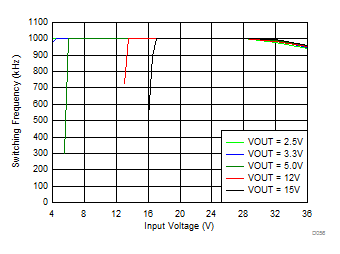ZHCSHO0C February 2018 – March 2023 LMZM23600
PRODUCTION DATA
- 1 特性
- 2 应用
- 3 说明
- 4 Revision History
- 5 Device Comparison
- 6 Pin Configuration and Functions
- 7 Specifications
- 8 Detailed Description
- 9 Application and Implementation
- 10Device and Documentation Support
- 11Mechanical, Packaging, and Orderable Information
7.7 Typical Characteristics
VIN = 24 V, TA = 25°C (unless otherwise noted). Refer to default evaluation board layout and bill of materials.
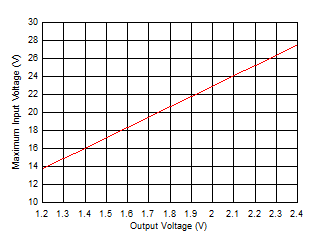 Figure 7-1 Maximum Input Voltage for VOUT < 2.5V
Figure 7-1 Maximum Input Voltage for VOUT < 2.5V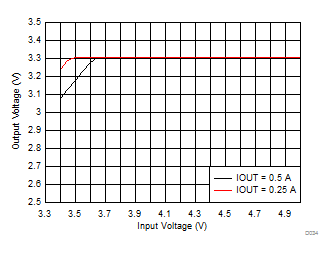
| VOUT = 3.3 V | ||
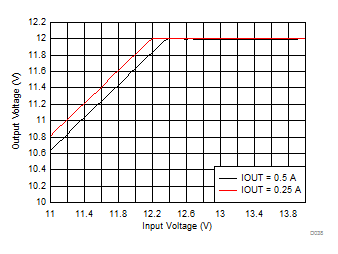
| VOUT = 12 V |
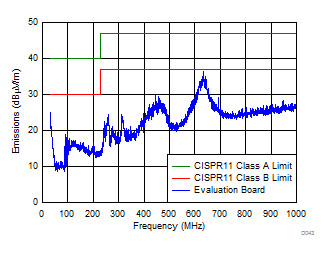
| VIN = 24 V | OUT = 5 V | IOUT = 0.5 A | |
| Default EVM Layout and BOM | |||
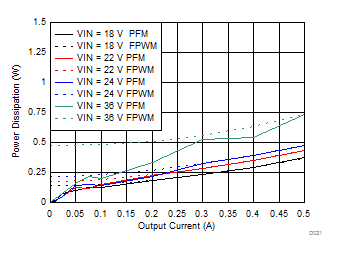
| VOUT = 15 V |
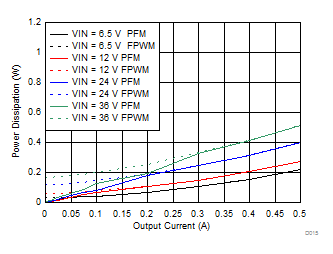
| VOUT = 5 V |
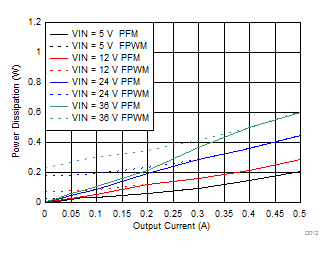
| VOUT = 2.5 V |
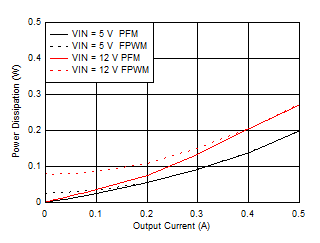
| VOUT = 1.2 V |
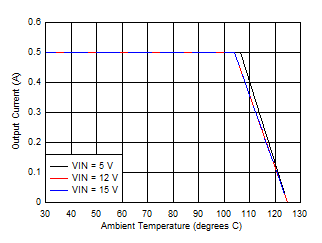
| VOUT = 1.8V | Rθ = 58°C/W |
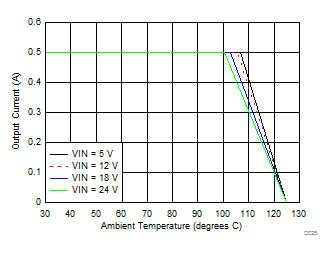
| VOUT = 3.3 V | Rθ = 58°C/W |
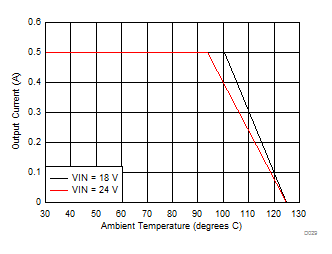
| VOUT = 12 V | Rθ = 58°C/W |

| VOUT = 2.5 V |
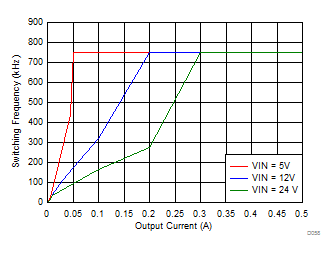
| VOUT = 3.3 V Fixed Option |
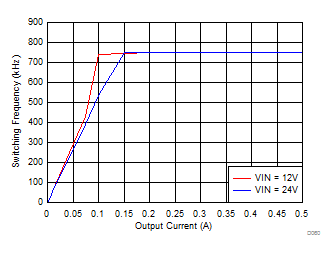
| VOUT = 5 V Fixed Option |
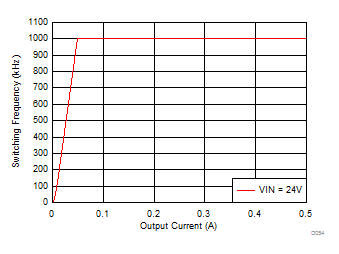
| VOUT = 15 V |
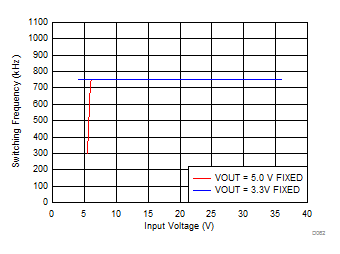
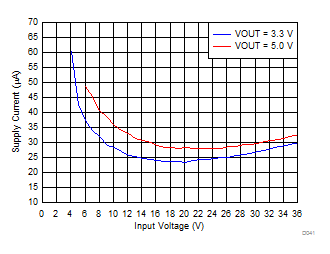
| Fixed output voltage options | EN = VIN | |
| Output voltage in regulation | Load = Open | |
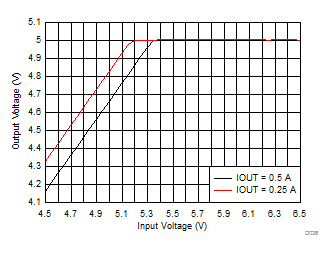
| VOUT = 5 V |
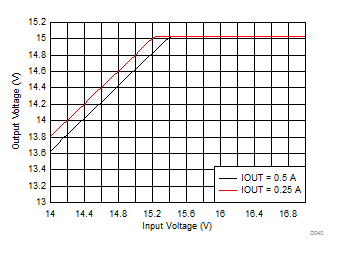
| VOUT = 15 V | ||
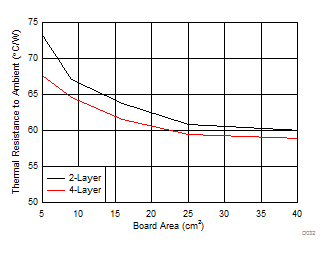
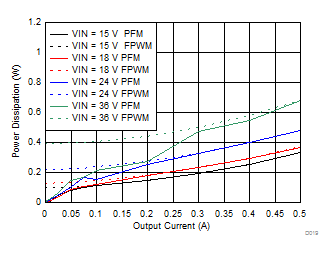
| VOUT = 12 V |
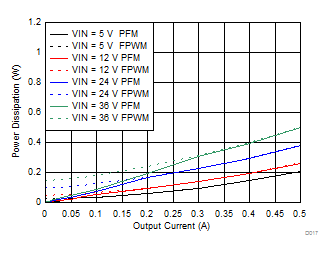
| VOUT = 3.3 V |
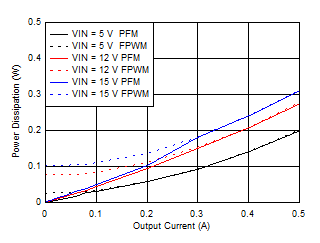
| VOUT = 1.8 V |
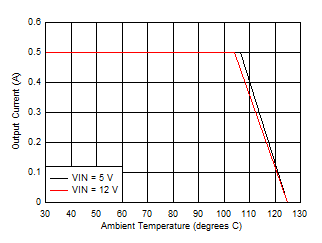
| VOUT = 1.2 V | Rθ = 58°C/W |
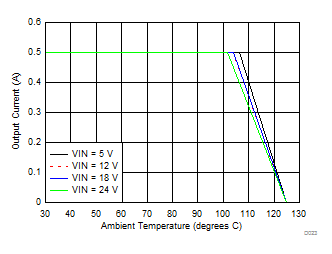
| VOUT = 2.5 V | Rθ = 58°C/W |
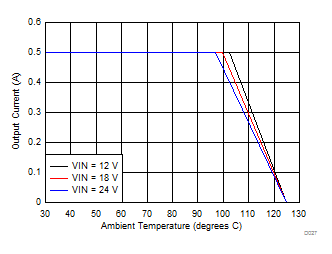
| VOUT = 5 V | Rθ = 58°C/W |
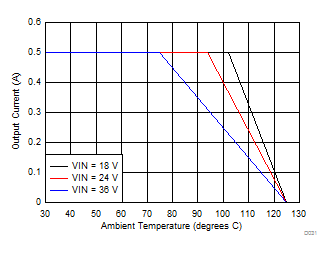
| VOUT = 15 V | Rθ = 58°C/W |
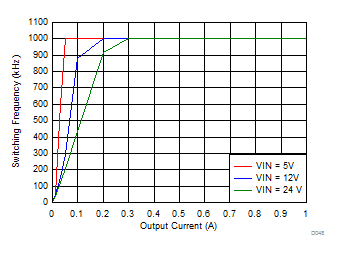
| VOUT = 3.3 V Adjustable Option |
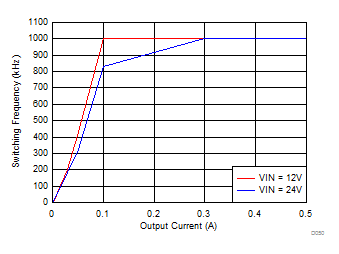
| VOUT = 5 V Adjustable Option |
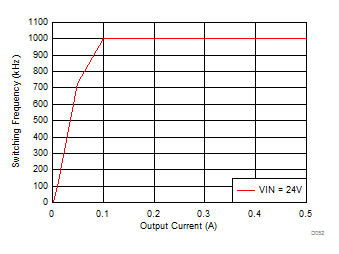
| VOUT = 12 V |
